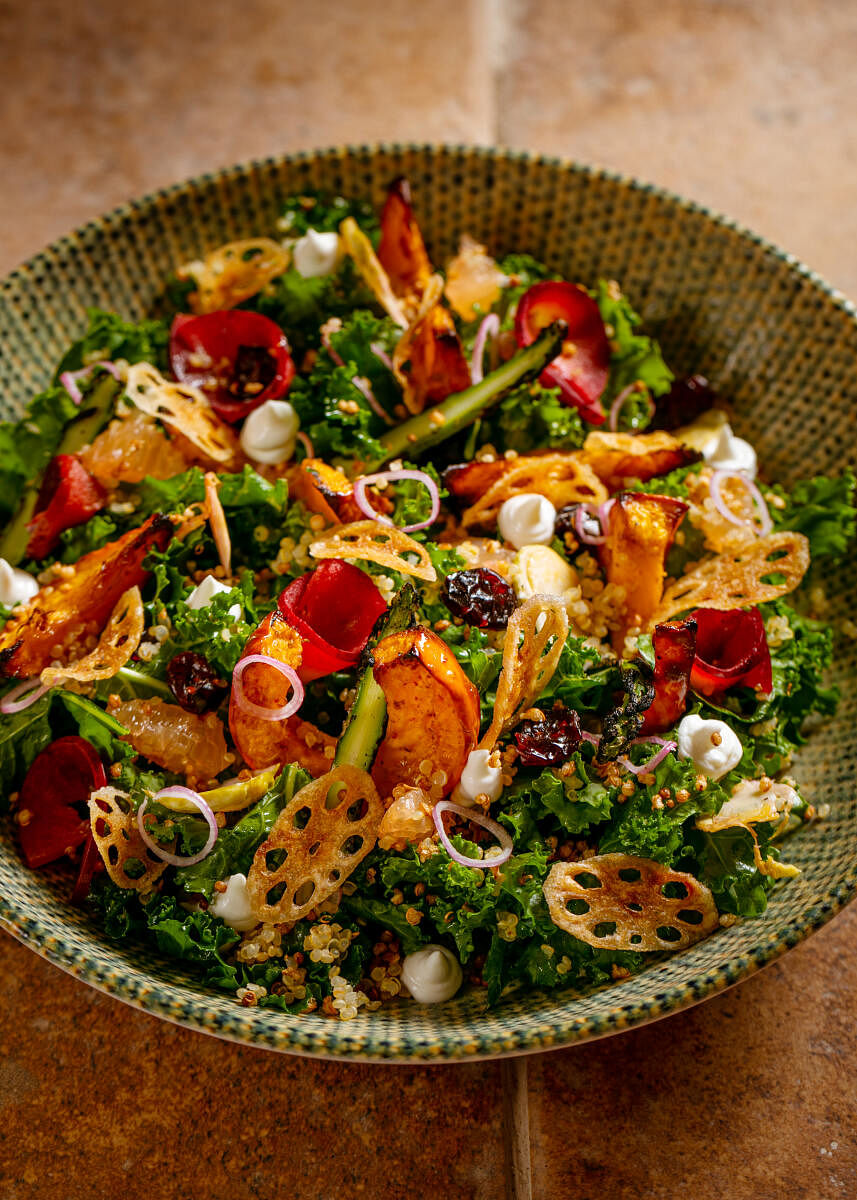

The last thing restaurants want to do is bore diners. So, you do not often find them proclaiming how environment-friendly they are, how they have reduced their carbon footprint (by buying avocados from Madikeri, instead of Mexico) and why they use upcycled corner lamps. But this is now changing. No, it is not that restaurants want to bore diners today but it is that eco-friendly eating is ‘legit’ and cool. With diners themselves becoming more climate- and nutrient-conscious, restaurants have all the incentive they need to not only do the right thing but also brag about it if they wish to. Which is why, as far as the world of fine dining is concerned, in recent times, the colour of change has certainly been green.
Change is a word that Chef Manu Chandra adores. One of the first things he declares in our nearly hour-long chat is that he wants to change the “nearly dead” and jaded “MG Road dining scene”. He means the heart of Bengaluru’s central business district, of course. His philosophy of change and reinvention is evident not only in the menu of his newly opened restaurant on the aforementioned jaded road but also in its decor. “Going green, climate-friendly eating, sustainable fine dining...these are all fine phrases but the trick is in implementing these objectives at every level in a restaurant,” explains Chandra, adding that a kitchen low on carbon footprint is just one aspect. The menu at his new restaurant is as hyper-local as it is global; so while it has Japanese Hamachi and Italian gelato, it also has dishes made of fermented cabbage, baby jackfruit and turmeric. Chef Chandra is also gung-ho about the millet talk in the country today. In fact, much before millets started gaining traction, Chandra had met with the then Agriculture minister Krishna Byre Gowda to chart out a game plan to promote millets in restaurants. At his previous restaurant, Chandra had already experimented with ragi crepes and jowar tacos.
The chef believes a model like Noma’s will not work for India ever. Indeed, it seems like it won’t work anywhere! Noma in Copenhagen, Denmark, often called the world’s ‘best restaurant’, is closing next year because, well, its famed gourmet hyper-local fine dining is turning out to be expensive and unsustainable! Recent hit movies like the black comedy The Menu (2022) and Boiling Point (2021) have highlighted as well as made fun of the immense stresses of running a restaurant like Noma, which a New York Times food critic blamed for “always trying to dazzle”. “Sustainability is not about glamourised deconstructing of dishes..it is about being true to the local, understanding why certain food systems work and others don’t and striving at the same time to retain the restaurant’s essence and character,” says Chandra.
Competition or concern?
Chef Nimish Bhatia, who uses his more than three decades of experience in the food industry to help restaurants adapt to new food businesses and cultures, believes the trend of restaurants breathlessly wanting to be eco-friendly is just “good-old competition playing out, albeit for a good cause.” Bhatia says today, amongst fine dining restaurants, the competition is not between good and bad but between good and good. “The craze for eco-dining is a mix of hype and genuine concern. To take the example of avocado from Mexico, restaurants can today say happily that they are using locally-grown ones in their guacamole — this is adding value not only to the customer (who is happy he is eating something fresh) but also to the restaurant itself, which has reduced its costs and carbon footprint both, by not importing it from miles away.” The chef adds that thankfully the days of restaurants gloating about purple potatoes from Peru and salmon from Norway are gone. “Today, sustainability is the topic that connects all of us — it gives the diner a psychological boost too — he thinks, ‘I am spending my money well and getting value for it too!’”
Another favourite buzzword in restaurants today is zero-waste. While the chef believes zero-waste is quite impractical in a restaurant set-up, he says it is still worthwhile to have it as a goal because it eggs on the food industry to go the extra mile. When I visited the kitchen of a gastro pub recently, I witnessed this ‘going the extra mile’ in action — there is a great effort to not waste food and instead, convert leftover vegetables into stock, ferment what can be fermented into sauces and use extra ingredients for a pop-up menu or a two-day food fest.
“With a zero-waste goal in mind, restaurants are actually minimising waste,” says the chef. He describes how restaurants are experimenting with condiments made with peels and skins, sourcing ingredients from farmers and local collectives and designing cuisines using seasonal vegetables. “Let’s look at the positives...whether this trend is born out of competition or concern, the outcome is gladdening,” he adds. And, not to forget, no one is left bored at the dining table.